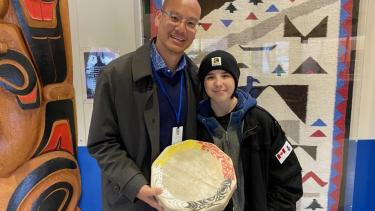
Fostering Student Agency in our Middle Schools
For a while now, we have been contemplating the impact of a student having two or more important adults in a school setting. Historically, we have hovered around the 45% mark on the MDI for Grade 8 students in the Abbotsford School District who say they have two or more important adults and have wondered what the term important or “caring” means to the students in our middle schools.
By definition, caring means to display kindness and concern for others. There is no doubt that 100% of the adults in our schools are caring, so we continue to contemplate why a larger percentage of middle school students do not identify as having two or more important adults that connect with them. When we have asked students what caring means to them, they offer a multitude of descriptors; adults know my name, ask me how I am doing, greet me when I walk into the classroom, etc. Based on some of these descriptors we should have more students identifying two or more important adults at school, especially given some of the interactions I have seen in schools between students and adults.
I have begun to wonder about the concept of agency, in connection with voice, and whether this is the unidentified aspect that sets the stage for care and support for students in school. There are many definitions as it relates to student agency, with most have the elements of goal setting, taking action, reflection and self-efficacy. That is, a student can set a goal that is meaningful to them, initiate action towards it, reflect on their progress, and a sense or belief they can act with agency.
We actually dipped our toes into this work in our middle schools in the 2021-22 school year with Shane Safir. She led us through a number of activities and discussions around a student agency framework. We played with ideas around actioning what we were hearing from students in a way that would demonstrate compassion and understanding of what was important to students, linking it to our school plans and the vision we held for middle schools.
Fast forward a couple of years, and we engaged in a project called Agenda Gap with Wellstream: Canadian Centre for Innovation in Child and Youth Mental Health and Substance Use at UBC. It was through this project that we continued to explore the idea of student voice and agency, ultimately resulting in middle school Indigenous students impacting and influencing the goals in our Enhancement Agreement. It was as a part of this work that I had a chance to meet a young Indigenous student who had found community and her voice through Agenda Gap. She had a belief that she could make a difference, built a level of knowledge in community with others, and felt valued and heard.
You could say she felt a high degree of self-efficacy, and that she was empowered to make a difference. Perhaps this is the missing ingredient in our work to support students to feel connected and cared for in our schools.
